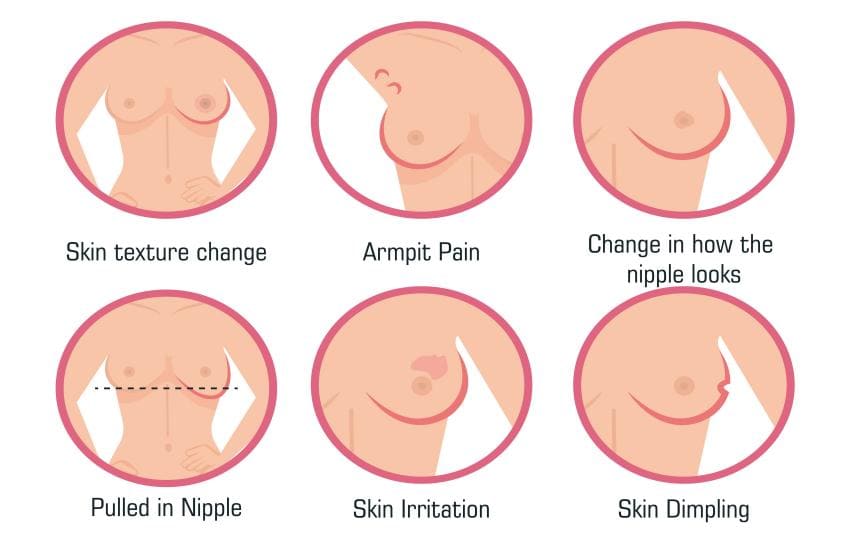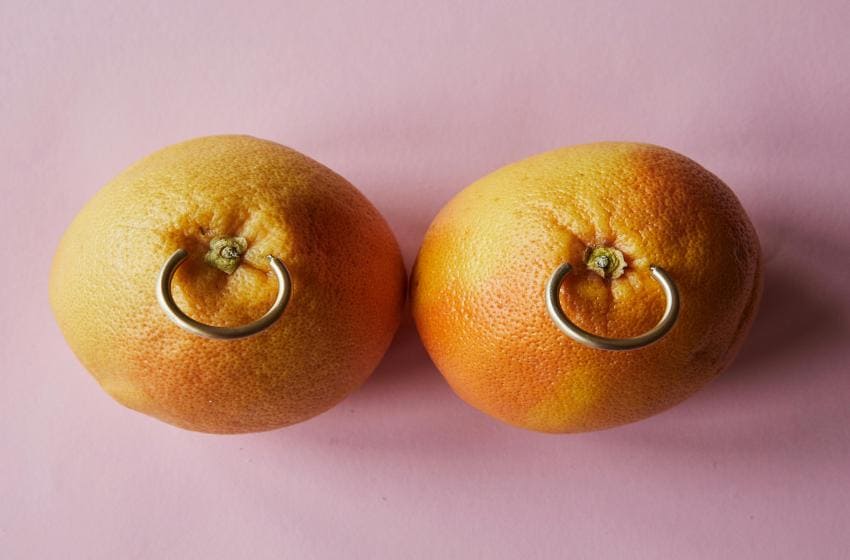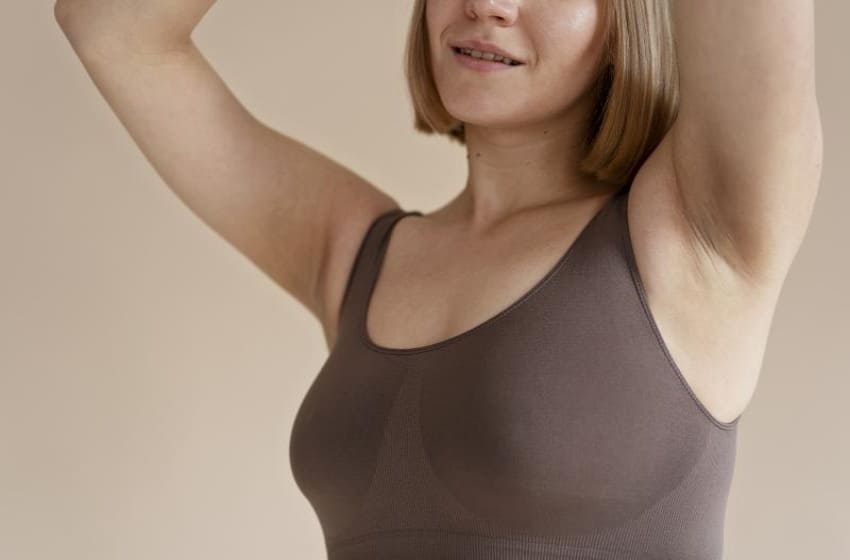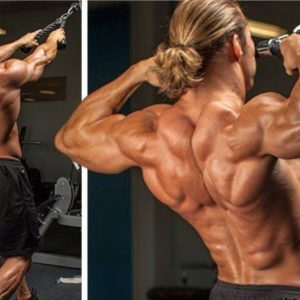
“Puffy nipples” is a term used to describe a certain physical characteristic. It’s where someone’s nipple and areola (the darker skin around the nipple) appear more protruding than usual.
Such a condition is more common than you think. In fact, it affects both males and females. Yet, it’s usually more noticeable in men as their chests are naturally smaller.
While having puffy nipples is typically harmless and doesn’t pose any health risks, it can be an inconvenience for some individuals.
If you suffer from this condition and want answers, this article is for you. Keep reading to learn more about having puffy nipples, why it happens, and how to treat it.
What Are Puffy Nipples?
You may think a puffy nipple is a normal part of someone’s body, and sometimes it is. After all, chests come in all shapes and sizes. It can even be a bit difficult to spot this condition, especially in larger-chested ladies.
However, this article isn’t about the natural soft nipple shape. It’s about a change that happens unexpectedly and becomes a noticeable issue with time.
Breast Anatomy
By nature, the breast is composed of glandular (milk-producing) tissue, ducts, fatty tissue, and connective tissue (Cooper’s ligaments). This whole structure sits on top of the pectoralis major muscle.
Positioned at the center of the areola, the nipples serve as outlets for milk during breastfeeding. Yes, it means that men have milk ducts too. Yet, their bodies don’t contain enough hormones (prolactin) to lactate.
As for the areola, it contains sebaceous glands responsible for producing an oily substance that lubricates and protects the skin.
In general, the size and shape of the breast vary from one person to the next. That’s because they’re influenced by factors like genetics, hormonal fluctuations, age, and body weight.
How Do You Know You Have Puffy Nipples?
The most obvious sign of having puffy nipples is their appearance. The majority of patients don’t even suffer from any other symptoms. In men, it’s easy to tell as you notice the nipple and surrounding areola appear more raised and protruding than normal.
As for women, it may require a closer look. Usually, you notice that the areola isn’t flowing naturally with the normal breast curve. Instead, it may appear a little more pointy, herniated, or cone-shaped.
Is Having Puffy Nipples Normal?
Sometimes, having puffy soft nipples is completely normal. It can be just a variation in the nipple appearance, regardless of the gender. In some cases, it happens during puberty. In other cases, it might have been present since birth.
So, other than the discomfort resulting from societal norms and beauty standards, it’s often a non-concerning matter.
That said, a few cases of puffy nipples can be a sign of underlying health issues. For instance, in males, a condition of puffy nipples that doesn’t resolve over time may be an indication of gynecomastia. That’s especially true if it’s accompanied by pain and tenderness.
What Are the Reasons for Having Puffy Nipples?
Some individuals have had puffy nipples for a long time, while others started noticing them more recently. This condition can have different causes for both men and women. Here are a few of them.
1. Genetics
The genetic factor plays a crucial role in determining the shape and size of your breasts. It can influence hormone levels, breast tissue composition, and overall anatomy. This may contribute to having puffy nipples.
One of the most obvious explanations that instantly comes to mind when noticing this condition is the genetic factor. If this is the case, your puffy nipples can be a hereditary issue that’s passed down to you from a relative. As people say, “It runs in the family.”
2. Hormonal Fluctuations
Hormonal changes can also lead to puffy nipples. This is particularly true for alterations that happen during puberty, menstruation, pregnancy, or breastfeeding. Primarily, it results from the increase in estrogen (the sex hormone responsible for breast tissue growth during puberty).
For example, the hormonal surges during puberty can stimulate the growth of breast tissues or the mammary gland behind the nipple. As a result, they may cause the nipples to stick out more than they normally would.
Similarly, hormonal fluctuations during pregnancy and breastfeeding can also affect breast tissues and nipple appearance.
3. Excess Body Fat
Some people have excess body fat in the breast area, particularly behind the nipples (or nipple-areola complex). These tissues may push the area forward, giving it a dome-like or cone-shaped appearance.
Fluctuating changes in body weight and fat distribution can also contribute to the size and shape of the nipples. Significant weight gain or loss can affect the overall fat distribution in the body, including the breasts. As a result, it might lead to changes in nipple prominence.
4. Medications
Some types of medications can cause hormonal imbalances in the body and lead to puffy nipples as a side effect. For example, hormonal treatments, recreational drugs, antipsychotics, and anabolic steroids may affect the levels of prolactin hormone in a person’s blood.
As such, they can promote the growth of breast tissue, especially in men.
5. Pregnancy
Naturally, during the period of pregnancy, the body starts to prepare for having a baby. That causes the oil glands in the areola to become larger, leading to a slight swelling that pushes the nipples more outwards.
On top of that, breastfeeding can also cause the nipples and areola to stretch out as a result of the sucking action. This causes the nipples to stick out even further.
6. Chafing
Though a bit uncommon, chafing can be another cause of puffy nipples. As you jog or run, the movement can cause friction between your nipples and the clothes you wear. Consequently, your nipples may swell and protrude temporarily.
Such an issue usually resolves on its own after a while. Yet, to prevent it from happening at all, you can use tape or nipple covers while doing cardio exercises.
7. Gynecomastia
Gynecomastia is one of the most common causes of puffy nipples in men. Principally, it’s a condition characterized by the enlargement of breast tissues in males. This results in having a more feminine-looking chest.
Such a condition can occur due to hormonal imbalances, certain medications, or an underlying medical condition. It leads to an increase in glandular tissues behind the areola and therefore causes puffy nipples.
How Do You Treat Puffy Nipples?
Treating puffy nipples depends on determining the issue causing the condition. While they’re typically harmless and don’t require medical intervention, some people may seek treatment for cosmetic or psychological reasons.
Here are the surgical and non-surgical treatment options to consider:
A. Non-Surgical Treatments
There can be some non-surgical treatment options to get rid of puffy nipples, depending on the cause. Take a look at a few options to treat such a condition (when caused by hormonal imbalance or excess body fat).
- Following a Low-Fat Diet: Besides the ovaries and adrenal glands, fat cells make a small amount of estrogen hormone in the body. As such, following a low-fat diet can aid in reducing body fat. Consequently, this lowers the estrogen levels secreted through the fat cells.
- Eating Healthier: Incorporating healthier foods into your diet (such as fruits and vegetables) and cutting processed sugars can also help. Such a subtle change allows the liver to better process estrogen, keeping it at normal levels.
- Consuming Less Alcohol: It’s a known fact that alcohol can affect the liver’s functions negatively. That’s why you need to drink in moderation to protect your liver from serious complications and allow it to process estrogen properly.
- Doing Chest Exercises: Exercises that target the chest muscle can strengthen and improve its contours. This includes push-ups, chest flies, and bench presses. Although they can’t work on the enlarged glandular tissues, they’re able to enhance the overall appearance.
- Wearing Compression Garments: Designed to flatten the chest area, these garments or undershirts enhance the appearance of your puffy nipples. It’s a successful yet temporary solution for those who feel self-conscious in public settings.
- Undergoing Hormonal Therapy: For those suffering from hormonal imbalances, regulating hormones is the right treatment. This approach involves medications or hormone replacement therapy under the guidance of a healthcare professional.
- Avoiding Stress: Constant stress can affect the human body significantly, causing serious hormonal imbalances. Therefore, it’s always great to find ways to relieve stress, such as exercise, meditation, and yoga.
- Changing Medications: Eliminating certain medications that cause gynecomastia can contribute to resolving the issue. Overall, consulting a physician to recommend substitutions is always the way to go.
- Eliminating Substance Use: Some recreational drugs (such as anabolic steroids, marijuana, heroin, etc.) may cause puffy nipples. If you or someone you love can’t quit one of these substances, don’t hesitate to seek help from specialized treatment centers.

B. Surgical Treatments
When non-surgical approaches fail to give the desired results, surgical interventions may work. All in all, the choice of procedure depends on the underlying cause and the result a person is aiming for. Take a look at a few surgical solutions:
- Glandular Tissue Removal (Subcutaneous Mastectomy): When the issue is caused by excess glandular tissue, a removal surgery may be necessary. Such an operation is usually performed to treat gynecomastia in males.
- Liposuction: This is a less invasive surgery suitable for individuals with moderate cases of puffy nipples. It involves removing excess fatty tissues from the area around the nipple and areola.
- Areola Reduction Surgery: In some cases of puffy nipples, the areola is disproportionately stretched. This is when areola reduction surgery is essential. This surgery involves removing a portion of the areola to create a more aesthetically pleasing shape.
- Nipple Reduction Surgery: Just like areola reduction surgery, nipple reduction surgery is a procedure performed to reduce the size and prominence of the nipple. This may involve removing a portion of the nipple tissue and reshaping it.
- Combined Procedures: In some cases, a combination of surgical procedures is necessary to achieve the desired cosmetic outcome. For example, glandular tissue removal may be combined with liposuction or skin tightening.
Final Thoughts
Puffy nipples, while common, can be a source of discomfort and self-consciousness for some people. Understanding the underlying causes and available treatment options can help diminish the concerns and boost confidence.
Whether you choose a non-surgical solution or consider a procedure, it’s crucial to consult a healthcare professional to determine the best approach.

